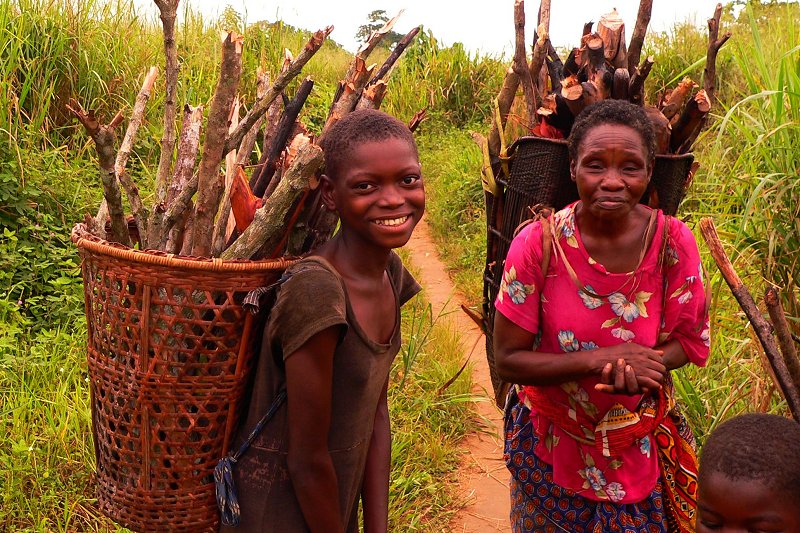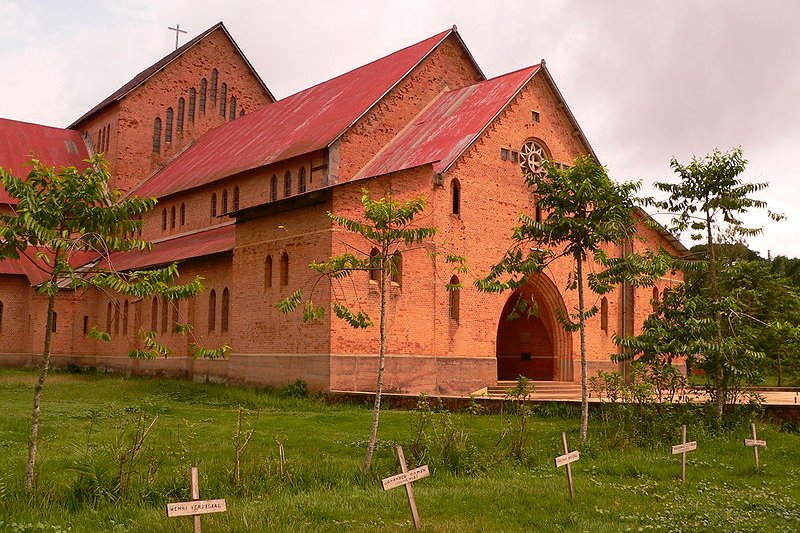 Ruwenzori Mountains, as seen from Virunga National Park on the eastern part of the Democratic Republic of the Congo
Ruwenzori Mountains, as seen from Virunga National Park on the eastern part of the Democratic Republic of the CongoSource: https://commons.wikimedia.org/wiki/File:Ruwenzori_Mountains_Virunga_National_Park.jpg
Author: Cai Tjeenk Willink

Democratic Republic of the Congo is a huge country in Central Africa. Covering 2,345,409 sq km (905,355 sq mi), it is the third largest country in Africa. It is almost landlocked, except for the 37-km stretch of coastline facing the Atlantic Ocean.
The Democratic Republic of the Congo has a population of 71 million people, making it the fourth most populous nation in Africa and the 18th most populous in the world. Its capital and biggest city is Kinshasa.
 A family in Rutshuru, Congo
A family in Rutshuru, CongoSource: https://commons.wikimedia.org/wiki/File:Cecilia_and_her_family.jpg
Author: Julien Harneis

This huge country covers two time zones, the West Africa Time and Central Africa Time, which are an hour and two hours ahead of Coodinated Universal Time. The official currency is the Congolese franc (CDF). Traffic is driven on the right. The phone IDD code is +243. Electricity here is 220V/50Hz using European plugs.
In 2010, the Democratic Republic of the Congo had a nominal GDP of $12.6 billion and a per capita nominal GDP of just $188, making it one of the poorest countries in the world. The per capita GDP at purchasing power parity stood at $340.
The Democratic Republic of the Congo is the most populous Francophone country in the world. To distinguish it from its neighbor, the Republic of the Congo, the Democratic Republic of the Congo is often called Congo-Kinshasa, in reference to its capital.
 Collecting firewood in Basankusu
Collecting firewood in BasankusuSource: https://commons.wikimedia.org/wiki/File:Basankusu_collecting_firewood_by_Francis_Hannaway.jpg
Author: Francish7

In its earliest incarnation, the Democratic Republic of the Congo was known as the African Congo Free State between 1877 and 1908. Between 1908 and 1960, it was called Belgian Congo. When it gained independence on 30 June 1960, it chosed to be known as the Republic of the Congo. However, when the French colony of Middle Congo gained independence, it too chose to be known as the Republic of the Congo. Hence the two countries were known as Congo-Léopoldville and Congo-Brazzaville, after their respective capitals.
From 27 October 1971 to 17 May 1997, Congo-Léopoldville was renamed by its new president Joseph-Désiré Mobutu as Zaïre. After Mobutu was ousted in 1997, the name reverted to Democratic Republic of the Congo by his opponent Laurent-Désiré Kabila.
Today the Democratic Republic of the Congo continues to be a poverty-stricken nation with a shaky political climate.
 Basankusu Cathedral
Basankusu CathedralSource: https://commons.wikimedia.org/wiki/File:Basankusu_Cathedral.jpg
Author: Francis Hannaway

Planning your visit to Democratic Republic of the Congo
Casual visitors are discouraged from visiting this country. Those who are going there on research and business should get the advise of the organization sending them.N'Djili International Airport (FIH) in Kinshasa is the gateway and largest of the four international airports in the Democratic Republic of the Congo. It receives regular flights by Air France from Paris-Charles de Gaulle, South African Airways from Johannesburg, and Ethiopian Airlines from Addis Ababa, among others.
Major Cities in Democratic Republic of the Congo
- Kinshasa - capital
- Bukavu
- Goma
- Lubumbashi
 Latest updates on Penang Travel Tips
Latest updates on Penang Travel Tips

Copyright © 2003-2025 Timothy Tye. All Rights Reserved.

 Go Back
Go Back